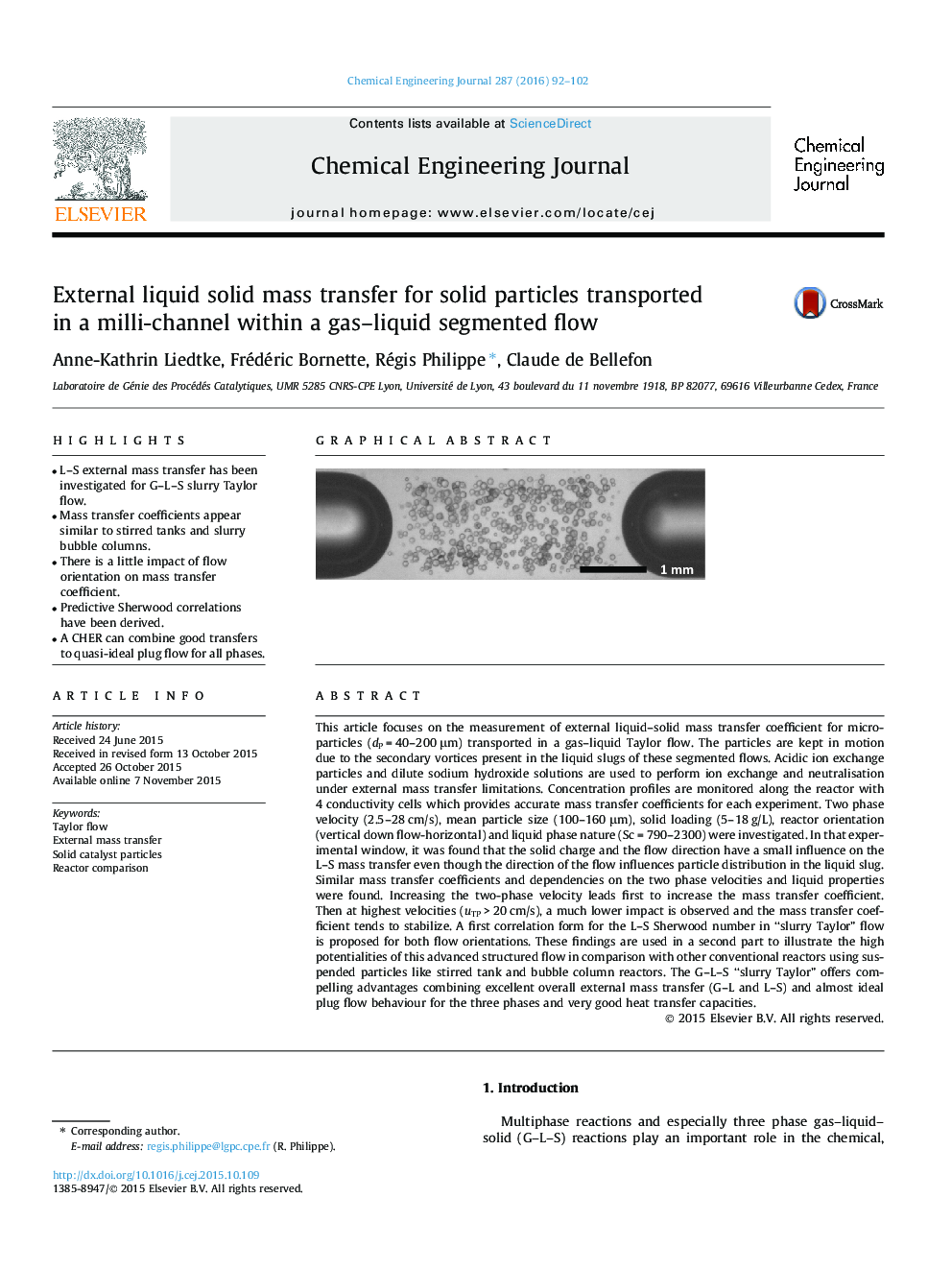| کد مقاله | کد نشریه | سال انتشار | مقاله انگلیسی | نسخه تمام متن |
|---|---|---|---|---|
| 145920 | 456354 | 2016 | 11 صفحه PDF | دانلود رایگان |
• L–S external mass transfer has been investigated for G–L–S slurry Taylor flow.
• Mass transfer coefficients appear similar to stirred tanks and slurry bubble columns.
• There is a little impact of flow orientation on mass transfer coefficient.
• Predictive Sherwood correlations have been derived.
• A CHER can combine good transfers to quasi-ideal plug flow for all phases.
This article focuses on the measurement of external liquid–solid mass transfer coefficient for micro-particles (dP = 40–200 μm) transported in a gas–liquid Taylor flow. The particles are kept in motion due to the secondary vortices present in the liquid slugs of these segmented flows. Acidic ion exchange particles and dilute sodium hydroxide solutions are used to perform ion exchange and neutralisation under external mass transfer limitations. Concentration profiles are monitored along the reactor with 4 conductivity cells which provides accurate mass transfer coefficients for each experiment. Two phase velocity (2.5–28 cm/s), mean particle size (100–160 μm), solid loading (5–18 g/L), reactor orientation (vertical down flow-horizontal) and liquid phase nature (Sc = 790–2300) were investigated. In that experimental window, it was found that the solid charge and the flow direction have a small influence on the L–S mass transfer even though the direction of the flow influences particle distribution in the liquid slug. Similar mass transfer coefficients and dependencies on the two phase velocities and liquid properties were found. Increasing the two-phase velocity leads first to increase the mass transfer coefficient. Then at highest velocities (uTP > 20 cm/s), a much lower impact is observed and the mass transfer coefficient tends to stabilize. A first correlation form for the L–S Sherwood number in “slurry Taylor” flow is proposed for both flow orientations. These findings are used in a second part to illustrate the high potentialities of this advanced structured flow in comparison with other conventional reactors using suspended particles like stirred tank and bubble column reactors. The G–L–S “slurry Taylor” offers compelling advantages combining excellent overall external mass transfer (G–L and L–S) and almost ideal plug flow behaviour for the three phases and very good heat transfer capacities.
Figure optionsDownload as PowerPoint slide
Journal: Chemical Engineering Journal - Volume 287, 1 March 2016, Pages 92–102
